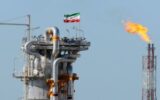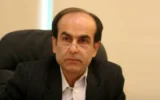
At the opening ceremony of the 19th Iran Plast, the CEO of the National Petrochemical Industries Company pointed out the status and importance of the petrochemical and polymer industries and said: Petrochemical products, especially polymers, play a key role in various industries and have a pervasive presence in our daily lives.

Regarding the fate of upstream memorandums of understanding and their conversion into contracts, the CEO of the National Petrochemical Company said: "Some of these memorandums are being converted into contracts. For example, the contract for the Bakhtar complex has been approved by the National Oil Company's board of directors and is being finalized."

Following repeated claims by Saudi Arabia and Kuwait regarding ownership of the Arash gas field, an international expert emphasized that the historical and legal background of the field is beyond doubt and that the best solution to end the disputes is to refer to impartial international experts and arbitrators.

While refineries around the world have achieved a high level of complexity by relying on new technologies and extensive investments, Iranian refineries are still significantly behind global standards. Morteza Behrouzifar, an energy expert, says that our problem is not just a lack of capital; even if we assume that we have sufficient financial resources to implement projects, there is still no possibility of serious upgrading of refineries due to limited access to modern technology and equipment.

The Deputy Minister of Oil announced in a press conference the export of gas to Iraq and the possibility of extending the long-term contract for gas exports to Türkiye.

Energy expert Saeed Saviz has unveiled a new method for increasing oil recovery for the first time. He says that using low-salt water injection could offset the decline in production in Iran's oil fields and even increase production capacity in the long term. In addition to relying on indigenous knowledge, the method will also respond to concerns such as water crises and land subsidence by reducing pressure on freshwater resources.

For years, mini-refineries have denied any gasoline exports and have denied accusations of fuel smuggling; but now the CEO of Shazand Petrochemical Company is openly saying that some of these units export gasoline to Afghanistan, and their exit routes are through the Dogharoon and Milak borders.

Gachsaran Petrochemical, a huge project with a billion-dollar investment that was supposed to produce one million tons of ethylene annually and feed four other petrochemical units, was halted and suffered losses after its early launch, despite the 13th government’s haste to complete it, due to lack of coordination in planning and lack of consumers. The petrochemical plant had drawn criticism from the National Petrochemical Industries Company, claiming that NPC was one of the factors that put Gachsaran in this situation. However, Saeed Baghbani, the director of production control at the Petrochemical Industries Company, denies these claims.

Hedayatullah Khademi, an energy expert, said: "We are a country that sells both crude oil and imports gasoline. Instead of trying to convert oil into more valuable products, we sell it raw and cheap. No matter how much oil China and the United States have, they buy several times more of it from abroad to convert it into a valuable commodity; but today we see that our country has been worn out in all areas of infrastructure and economy."

The short 12-day war between Iran and the Zionist regime, contrary to predictions, failed to disrupt the global oil market. This event showed that the Middle East is no longer the only determinant of global oil prices. In an interview with Hossein Mirafazli, an energy expert, we examined this major transformation and the future of the energy market. He talks about the stunning growth of renewable energies, especially solar, and the world's reduction in dependence on oil, and believes that these changes will transform not only the energy market, but also global political and geopolitical equations. Is the era of the Middle East's oil monopoly over?










